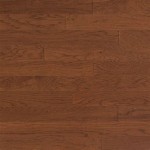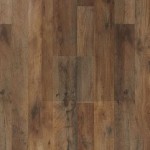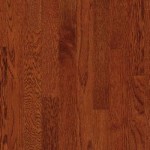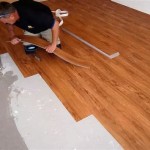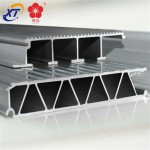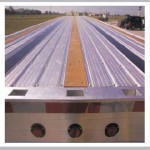How To Get Super Glue Off Vinyl Flooring Without Damaging It
Super glue, also known as cyanoacrylate adhesive, is a powerful bonding agent prized for its rapid setting time and strong hold. While its adhesive properties are advantageous for a multitude of tasks, accidental spills onto vinyl flooring can create a challenging situation. Vinyl flooring, although durable, is susceptible to damage from harsh chemicals and abrasive techniques. Therefore, removing super glue requires a careful and methodical approach to prevent discoloration, scratching, or other forms of degradation.
The primary objective is to soften the hardened super glue without compromising the integrity of the vinyl surface. Several methods can be employed, each with varying degrees of effectiveness depending on the size of the spill, the type of super glue used, and the composition of the vinyl flooring. Before initiating any cleaning process, it is crucial to test the selected method on an inconspicuous area of the vinyl floor to assess its compatibility and potential for adverse reactions. This precautionary step can mitigate the risk of widespread damage and ensure the chosen technique is suitable for the specific type of vinyl flooring.
Proper preparation is also necessary. Gather all the required materials and tools before commencing the removal process. This will streamline the procedure and minimize the risk of further spreading the glue. Ensure the area is well-ventilated, as some solvents may emit fumes. Additionally, wear protective gloves to prevent skin irritation from the solvents or prolonged contact with the super glue.
Applying Heat to Soften the Glue
Heat application is a common technique used to soften hardened super glue, making it easier to remove from various surfaces. However, direct application of high heat to vinyl flooring is not recommended due to the potential for melting or warping the material. A more controlled and indirect heat source is preferred. One effective method involves using a hairdryer set to a low or medium heat setting. Hold the hairdryer a few inches away from the glue stain and direct the warm air onto the affected area for several minutes. The heat will gradually soften the glue, making it more pliable.
As the glue softens, gently scrape it away using a plastic scraper or a blunt-edged tool, such as a credit card. Avoid using metal scrapers or sharp objects, as these can scratch or gouge the vinyl surface. Work slowly and carefully, applying gentle pressure to lift the softened glue. If the glue remains stubborn, reapply heat and continue scraping until the majority of the adhesive is removed. After removing the bulk of the super glue, a residue may still be present. This residue can be addressed using other cleaning agents, as detailed in subsequent sections.
Another heat-based method involves using a warm, damp cloth. Immerse a clean cloth in warm water and wring out any excess moisture. Place the warm cloth over the super glue stain and allow it to sit for several minutes. The warmth and moisture will help to soften the glue. After soaking, gently wipe or scrub the area with the cloth to remove the loosened adhesive. Repeat this process as needed until the glue is effectively removed. This method is less likely to damage the vinyl compared to direct heat application and is suitable for smaller glue spills.
Regardless of the heat source used, it is imperative to monitor the vinyl flooring for any signs of discoloration or distortion. If any adverse reactions are observed, discontinue the heat application immediately and consider alternative removal methods.
Utilizing Solvents for Glue Dissolution
Solvents are chemical compounds that can dissolve or weaken the bonds of super glue, facilitating its removal. Several solvents are effective for this purpose, but it is crucial to select a solvent that is safe for use on vinyl flooring. Acetone, commonly found in nail polish remover, is a potent solvent that can dissolve super glue. However, acetone can also damage or discolor some types of vinyl, so it is essential to perform a spot test before applying it to the entire affected area. Apply a small amount of acetone to an inconspicuous area of the vinyl floor and observe for any adverse reactions, such as discoloration, softening, or dissolving of the vinyl. If no damage is evident after a few minutes, proceed with caution.
To use acetone, saturate a cotton ball or clean cloth with the solvent and gently dab it onto the super glue stain. Allow the acetone to sit on the glue for a few minutes to soften it. Then, use a plastic scraper or a soft cloth to gently wipe away the dissolved glue. Repeat this process as needed until the glue is completely removed. After removing the glue, clean the area with a mild soap and water solution to remove any residual acetone.
Another effective solvent is isopropyl alcohol, also known as rubbing alcohol. Isopropyl alcohol is generally considered to be less harsh than acetone and may be a safer option for some types of vinyl flooring. Follow the same procedure as with acetone, applying the alcohol to the glue stain, allowing it to soak, and then gently scraping or wiping away the softened adhesive. Again, it is advisable to perform a spot test before using isopropyl alcohol to ensure compatibility with the vinyl flooring.
In addition to acetone and isopropyl alcohol, specialized super glue removers are available commercially. These removers are formulated to dissolve super glue without damaging various surfaces, including vinyl. Follow the manufacturer's instructions carefully when using these products. Always perform a spot test before applying the remover to the entire affected area. These specialized removers often contain a blend of solvents and additives designed to effectively break down the glue while minimizing the risk of damage.
When working with solvents, ensure adequate ventilation to avoid inhaling harmful fumes. Wear protective gloves to prevent skin irritation. Avoid prolonged contact between the solvent and the vinyl flooring to minimize the risk of damage.
Employing Natural and Mild Abrasive Methods
For individuals seeking alternatives to harsh chemical solvents, natural and mild abrasive methods can be employed to remove super glue from vinyl flooring. These methods typically involve using everyday household items to gently abrade or dissolve the glue without causing significant damage to the vinyl surface. One such method involves using baking soda and water. Baking soda is a mild abrasive that can help to loosen the glue without scratching the vinyl. Create a paste by mixing baking soda with a small amount of water. Apply the paste to the super glue stain and gently rub it in a circular motion using a soft cloth or sponge. The mild abrasive action of the baking soda will help to break down the glue. Wipe away the paste with a damp cloth and repeat the process as needed until the glue is removed.
Another natural method involves using vinegar. Vinegar is a mild acid that can help to dissolve super glue. Soak a cotton ball or clean cloth in white vinegar and apply it to the glue stain. Allow the vinegar to sit on the glue for several minutes to soften it. Then, gently wipe or scrub the area with the cloth to remove the loosened adhesive. Repeat this process as needed until the glue is effectively removed. Vinegar is generally safe for use on most types of vinyl flooring, but it is still advisable to perform a spot test before applying it to the entire affected area.
A simple dish soap solution can also be effective for removing super glue residue. Mix a few drops of mild dish soap with warm water. Soak a cloth in the soapy water and gently wipe the affected area. The soap will help to loosen the glue residue, making it easier to remove. Rinse the area with clean water and dry it thoroughly.
Another method involves using a paste of sugar and water. The coarse texture of sugar can provide a mild abrasive action to help loosen the glue. Mix granulated sugar with a small amount of water to create a thick paste. Apply the paste to the super glue stain and gently rub it in a circular motion using a soft cloth or sponge. Wipe away the paste with a damp cloth and repeat the process as needed until the glue is removed. Ensure that all sugar is removed to prevent attracting insects.
When using any abrasive method, it is crucial to avoid applying excessive pressure, as this can scratch the vinyl flooring. Work gently and patiently, and always test the method on an inconspicuous area before applying it to the entire affected area.
Following any glue removal method, it is essential to clean the area thoroughly with a mild soap and water solution to remove any residue from the cleaning agents. Dry the area thoroughly with a clean cloth. Inspect the vinyl flooring for any signs of damage, such as discoloration, scratching, or dullness. If any damage is present, consider applying a vinyl floor polish or restorer to restore the floor's appearance.

How To Remove Super Glue From Laminate Flooring 14 Steps

How To Remove Vinyl Glue From The Floor Effective Cleanup Guide Waste Removal Usa

Removing Glue From Vinyl Plank Flooring Hometalk

Floor Glue Clean Howto Luxuryvinylplank Pvc Tiktok

How To Remove Glue Residue From Vinyl Flooring

Removing Glue Or Adhesive From Hardwood Floors The Speckled Goat

Don T Panic If You Spill Super Glue On Wood Floors Here S A Simple Solution

Best Ways To Take Out Even Impossible Remove Glue From Floors

How To Remove Vinyl Glue From The Floor Effective Cleanup Guide Waste Removal Usa

Removing Glue Or Adhesive From Hardwood Floors The Speckled Goat
Related Posts

